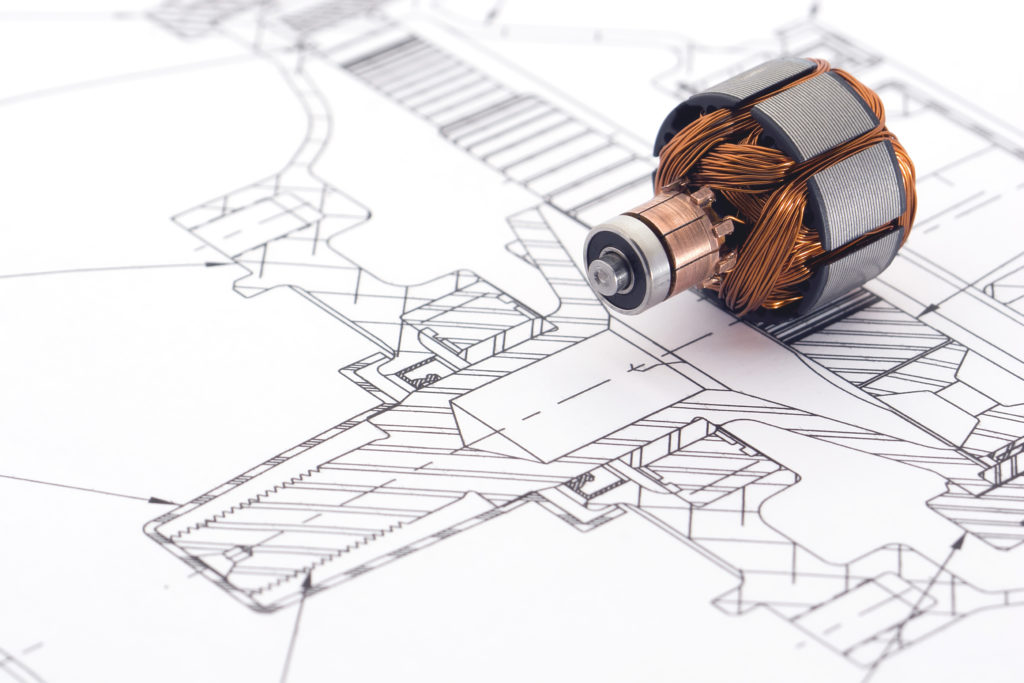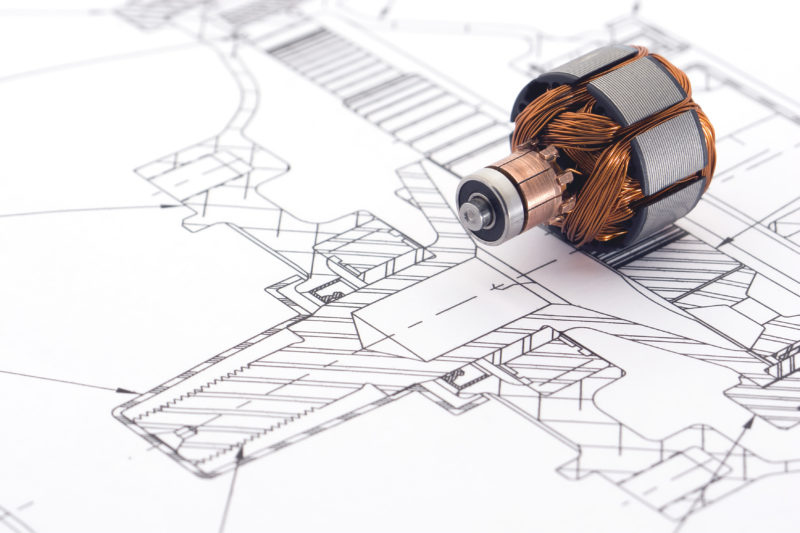As reported in an earlier ANGLE post, we discussed how 2021 saw a number of patent office developments with regard to whether a non-human entity could be considered an inventor under various patent regimes. Prior to 2021, several patent offices had considered this issue and found that A.I. could not be considered an inventor. In 2021, however, an Australian Court found that a non-human “inventor” is not inconsistent with inventorship under Australian law and South Africa issued a patent designating an A.I. system as the inventor.
It would appear at the end of 2021 that some patent offices were trending towards recognizing a non-human entity, like A.I. based technology, as an inventor. Could this trend continue?
Maybe not. With a decision just before Christmas of 2021 from European authorities, any such trend may have been stopped in its tracks.
Stephen Thaler’s “Creativity Machine” DABUS
Much like Australia and South Africa, the European patent cases involved patent applications filed by Dr. Stephen Thaler in 2018.[1] These patent applications designated an A.I. system called “DABUS” as the inventor. Thaler was identified as the applicant as he was the owner and operator of the computer on which DABUS operates. Thaler stated that he had “acquired” the right to the inventions from the inventor by being its successor in title, arguing that as the machine’s owner, he was assigned any intellectual property rights created thereby.
In an earlier decision,[2] the European Patent Office (“EPO”) refused the applications on the basis that only natural persons can be named as inventors in a patent application. Similar decisions were reached in the UK and US patent offices. The US and UK decisions were later upheld.[3]
The European Decisions
On December 21, 2021, in public oral proceedings dismissing Thaler’s appeal, the Legal Board of Appeal of the EPO (the “Board”) confirmed that an inventor designated in a patent application must be a human being under the European Patent Convention (“EPC”). A written decision and reasons will be issued later.
In its communiqué, the Board did provide some additional details. The central question, as with all other other cases, was whether the applicant, when applying for a European patent, can designate as the inventor an A.I. system since the inventions had been created autonomously by DABUS.
According to the European Patent Convention (“EPC”) the designation of the inventor is a formal requirement which must be fulfilled in accordance with the EPC and its applicable rules. The EPO refused both applications as the designation of inventorship was not consistent with the EPC for two reasons. First, it concluded that only a human inventor could be an inventor within the meaning of the EPC. Secondly, the EPO was of the opinion that a machine could not transfer any rights to the applicant, namely Thaler. The EPO considered that the statement that the applicant was successor in title because he owned the machine did not satisfy the requirements of the EPC.
The Board, in its decision, dismissed the appeal and orally provided the following reasoning in both cases:
- Under the EPC, the inventor had to be a person with legal capacity; and
- The statement as to entitlement to the application had to be in conformity with the EPC, and the EPO was competent to assess whether a statement indicating the origin of the right to the European patent was proper under the EPC.
Canada appears to be taking a consistent position with EPO
Canadian courts have yet to explicitly consider whether an invention generated by a non-human is patentable, so it will be interesting to see how classical interpretations of patent law will be applied to non-human inventors.
We may not have to wait too long for an answer, however, as the above noted Thaler applications are now before the Canadian Intellectual Property Office (“CIPO”).
An “inventor” is not defined in the Canadian Patent Act. The Patent Act does not, on its face, restrict who can be an inventor. Canadian courts have found that the inventor is the person whose conception gives rise to the invention, and/or the person who sets the conception or discovery into a definite and practical shape.
Canadian patent application No. 3,137,161, corresponding to Thaler’s Patent Cooperation Treaty (“PCT”) application, is currently pending before CIPO. In a letter from the patent office dated November 8th, 2021, CIPO has taken the position that under Section 27(4) of the Patent Act, a patent application must be filed by an inventor or the legal representative of the inventor, the inventor needs to be identified and the applicant must file a statement of entitlement. As the inventor is a machine and cannot “… have rights under Canadian law or transfer those rights to a human, …”, the application does not comply with the Canadian Patent Act and Rules. CIPO has now requisitioned that the applicant “… may attempt to comply by submitting a statement on behalf of the Artificial Intelligence (AI) machine and identify, in said statement, himself as the legal representative of the machine.” Thaler has three months to respond.
The Canadian part in this saga is just beginning…
Learn more about our patent practice.
[1] EP 3564144 and EP 3563896.
[2] See https://www.epo.org/news-events/news/2020/20200128.html.
[3] For the US see Thaler v. Iancu, et al., 2021 U.S.P.Q.2D (BNA) 917 (E.D. Va. September 2, 2021). For the UK see Thaler v The Comptroller-General of Patents, Designs And Trade Marks [2020] EWHC 2412 (Pat)

L’intelligence artificielle n’est pas un « inventeur » en vertu du droit européen des brevets : le Canada se dirige-t-il vers la même voie? – 24 janvier 2022
Comme nous l’avons indiqué dans un précédent article The Angle, l’année 2021 a été marquée par un certain nombre de changements par les bureaux de brevets concernant la capacité d’une entité non humaine à être considérée comme un inventeur dans le cadre de divers régimes de brevets. Avant 2021, plusieurs bureaux de brevets avaient examiné cette question et conclu que l’intelligence artificielle (IA) ne pouvait pas être considérée comme un inventeur. En 2021, un tribunal australien a estimé qu’un « inventeur » non humain n’est pas incompatible avec le titre d’inventeur en vertu du droit australien et l’Afrique du Sud a délivré un brevet désignant un système d’IA comme inventeur.
Il semblerait, à la fin de l’année 2021, que certains bureaux de brevets aient tendance à reconnaître les entités non humaines, comme une technologie basée sur l’IA, en tant qu’inventeurs. Cette tendance pourrait-elle se poursuivre?
Peut-être pas. Compte tenu de la décision prise par les autorités européennes juste avant Noël, en 2021, une telle tendance pourrait avoir déjà été freinée dans sa lancée.
DABUS, la « machine à créativité » de Stephen Thaler
Tout comme l’Australie et l’Afrique du Sud, les litiges européens en matière de brevets portaient sur des demandes de brevet déposées par Dr Stephen Thaler en 2018[1]. Ces demandes de brevet désignaient comme inventeur un système d’IA appelé « DABUS ». Dr Thaler a été identifié comme le demandeur, car il était le propriétaire et l’utilisateur de l’ordinateur sur lequel fonctionne DABUS. Dr Thaler a déclaré qu’il avait « acquis » les droits sur les inventions de l’inventeur en étant son ayant cause, soutenant qu’en tant que propriétaire de l’appareil, tout droit de propriété intellectuelle créé par l’appareil lui avait été cédé.
Dans une décision antérieure[2], l’Office européen des brevets (« OEB ») a rejeté des demandes au motif que seules des personnes physiques peuvent être désignées comme inventeurs dans une demande de brevet. Des décisions similaires ont été rendues par les bureaux de brevets du Royaume-Uni et des États-Unis. Les décisions américaines et britanniques ont été maintenues par la suite[3].
Les décisions européennes
Le 21 décembre 2021, dans le cadre d’une audience orale publique rejetant le recours de Dr Thaler, la chambre de recours juridique de l’OEB (la « Chambre ») a confirmé qu’un inventeur désigné dans une demande de brevet doit être un être humain en vertu de la Convention sur le brevet européen (la « CBE »). Une décision écrite et les motifs seront publiés ultérieurement.
Dans son communiqué, la Chambre a fourni quelques détails supplémentaires. La question centrale, comme dans toutes les autres affaires, était de savoir si le demandeur, lorsqu’il dépose une demande de brevet européen, peut désigner comme inventeur un système d’IA, puisque les inventions avaient été créées de manière autonome par DABUS.
Selon la CBE, la désignation de l’inventeur est une condition formelle qui doit être respectée conformément à la CBE et à ses règles applicables. L’OEB a refusé les deux demandes, car la désignation de l’inventeur n’était pas conforme à la CBE pour deux raisons. Premièrement, il a conclu que seul un inventeur humain pouvait être un inventeur au sens de la CBE. Deuxièmement, l’OEB était d’avis qu’un appareil ne pouvait transférer aucun droit au demandeur, à savoir Dr Thaler. L’OEB a considéré que la déclaration selon laquelle le demandeur était un ayant cause parce qu’il était propriétaire de l’appareil ne satisfaisait pas aux exigences de la CBE.
La Chambre, dans sa décision, a rejeté l’appel et a fourni oralement les motifs suivants dans les deux cas :
- En vertu de la CBE, l’inventeur devait être une personne ayant la capacité juridique.
- La déclaration relative au droit à la demande devait être conforme à la CBE, et l’OEB était compétent pour évaluer si une déclaration indiquant l’origine du droit au brevet européen était appropriée en vertu de la CBE.
Le Canada semble adopter une position cohérente avec l’OEB.
Les tribunaux canadiens ne se sont pas encore penchés explicitement sur la question de savoir si une invention créée par une entité non humaine est brevetable. Il sera donc intéressant de voir comment les interprétations classiques du droit des brevets seront appliquées aux inventeurs non humains.
Il se peut toutefois que nous n’ayons pas à attendre longtemps pour obtenir une réponse, car les demandes de Dr Thaler susmentionnées sont actuellement examinées par l’Office de la propriété intellectuelle du Canada (l’« OPIC »).
La notion d’« inventeur » n’est pas définie dans la Loi sur les brevets canadienne, mais elle ne restreint pas, à première vue, qui peut l’être. Les tribunaux canadiens ont conclu que l’inventeur est la personne dont la conception donne naissance à l’invention et/ou la personne qui donne à la conception ou à la découverte une forme définie et pratique.
La demande de brevet canadien no 3137161, correspondant à la demande de Dr Thaler déposée en vertu du Traité de coopération en matière de brevets (« PCT »), est actuellement en instance devant l’OPIC. Dans une lettre du bureau des brevets datée du 8 novembre 2021, l’OPIC a pris la position suivante : en vertu de l’article 27 (4) de la Loi sur les brevets, une demande de brevet doit être déposée par un inventeur ou le représentant légal de celui-ci, l’inventeur doit y être identifié et le demandeur doit déposer une déclaration de droit. Comme l’inventeur est un appareil et qu’il ne peut [traduction] « … avoir des droits en vertu de la loi canadienne ou transférer ces droits à un être humain … », la demande n’est pas conforme à la Loi sur les brevets et aux Règles sur les brevets. L’OPIC a maintenant exigé que le demandeur [traduction] « … puisse tenter de se conformer en soumettant une déclaration au nom de l’appareil d’intelligence artificielle (IA) et en s’identifiant, dans ladite déclaration, comme le représentant légal de l’appareil ». Dr Thaler a trois mois pour répondre.
La partie canadienne de cette saga ne fait que commencer…
Découvrez notre pratique spécialisée en brevets.
[1] EP 3564144 et EP 3563896.
[2] Voir https://www.epo.org/news-events/news/2020/20200128.html (en anglais seulement).
[3] Pour les États-Unis, voir Thaler v. Iancu, et al., 2021 U.S.P.Q.2D (BNA) 917 (E.D. Va. 2 septembre 2021). Pour le Royaume-Uni, voir Thaler v. The Comptroller-General of Patents, Designs And Trade Marks [2020] EWHC 2412 (Pat).
Mark D. Penner’s practice focuses on all aspects of the acquisition, protection, enforcement and strategic use of a wide range of intellectual property assets in Canada and around the world.


